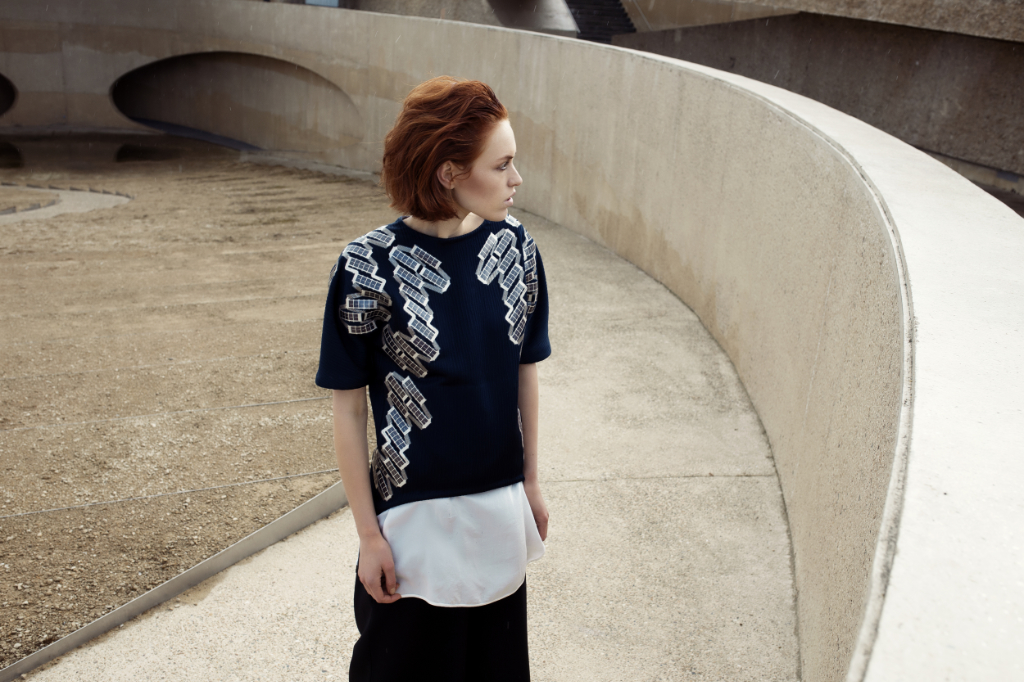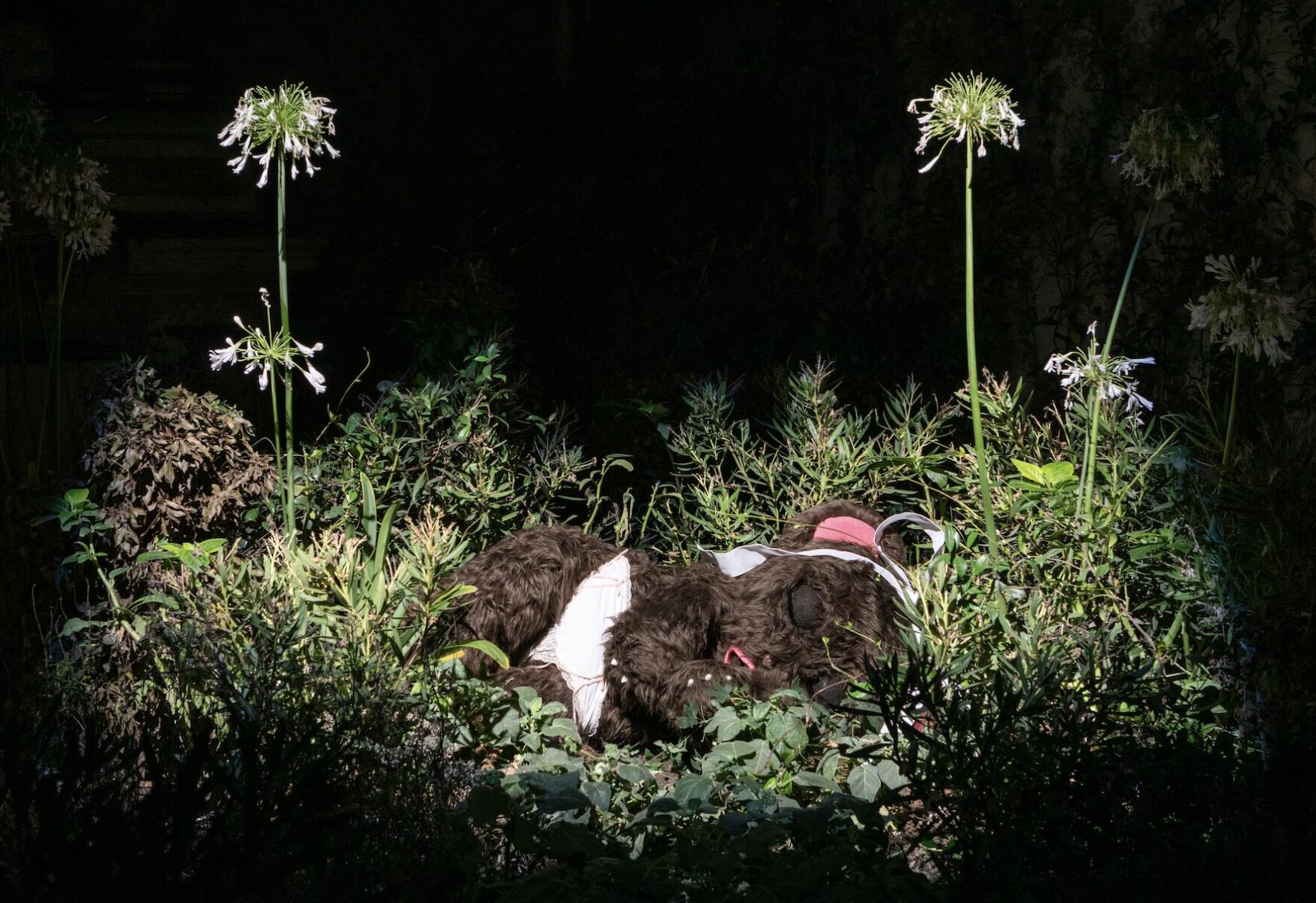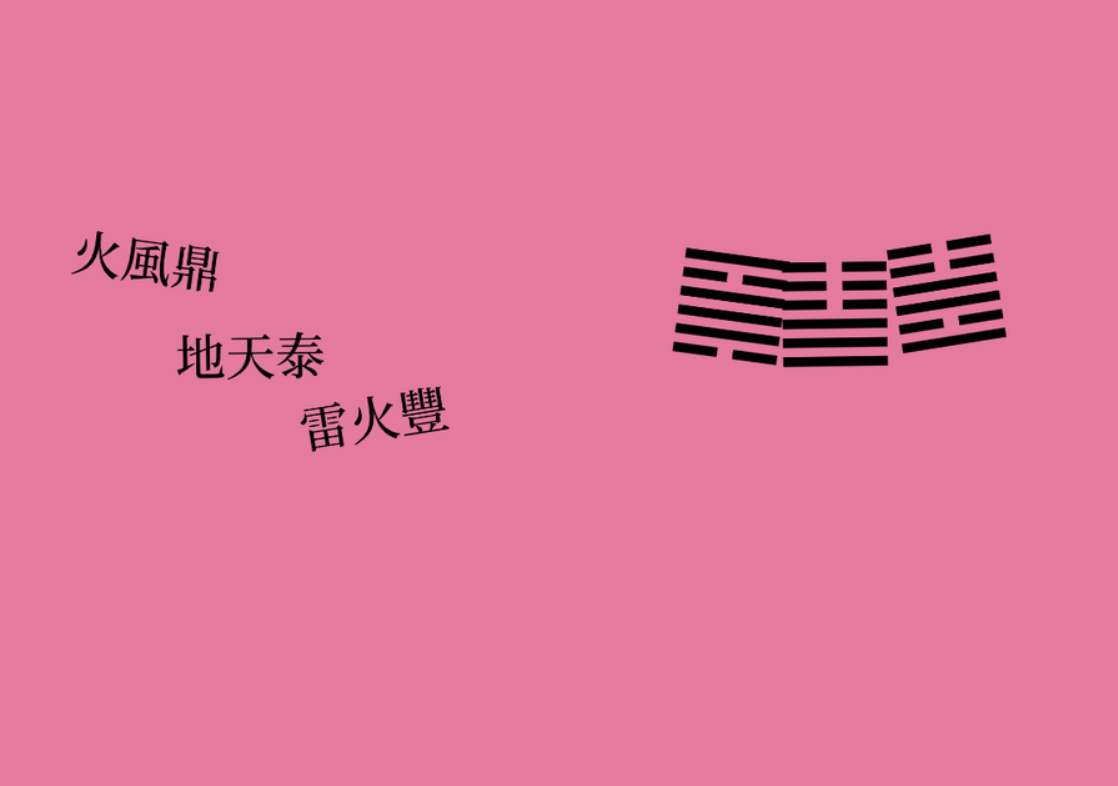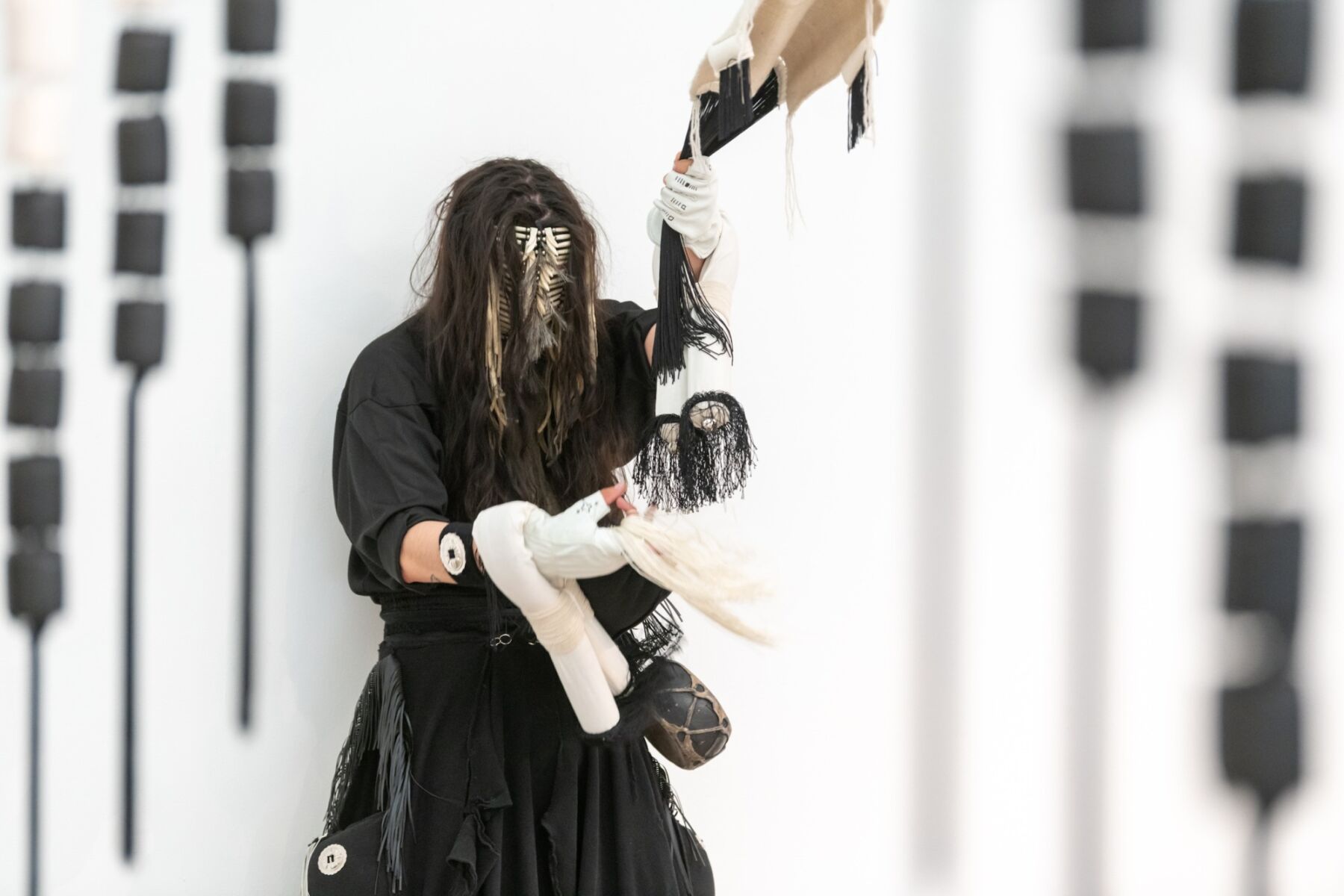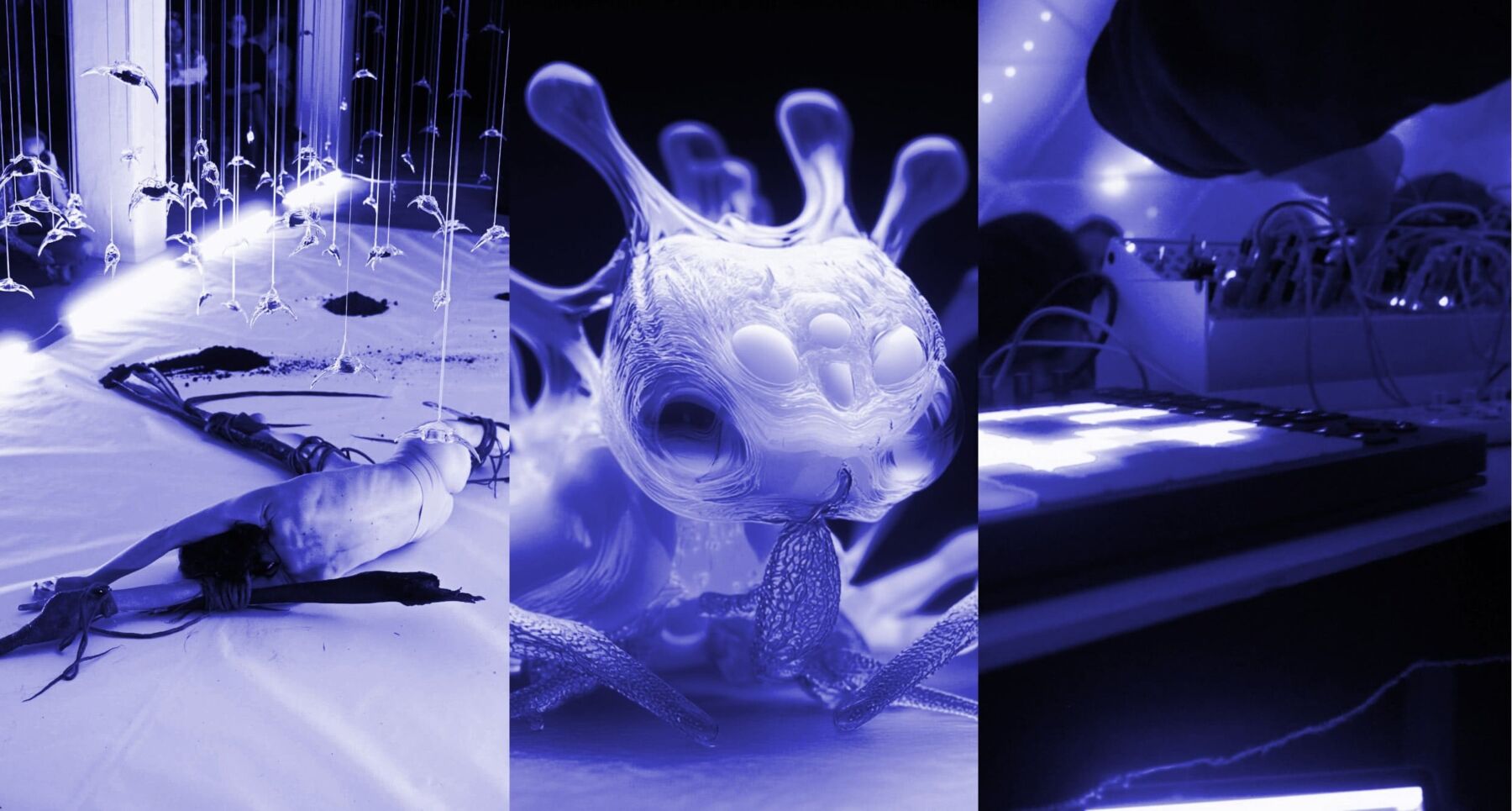Interview by Lula Criado
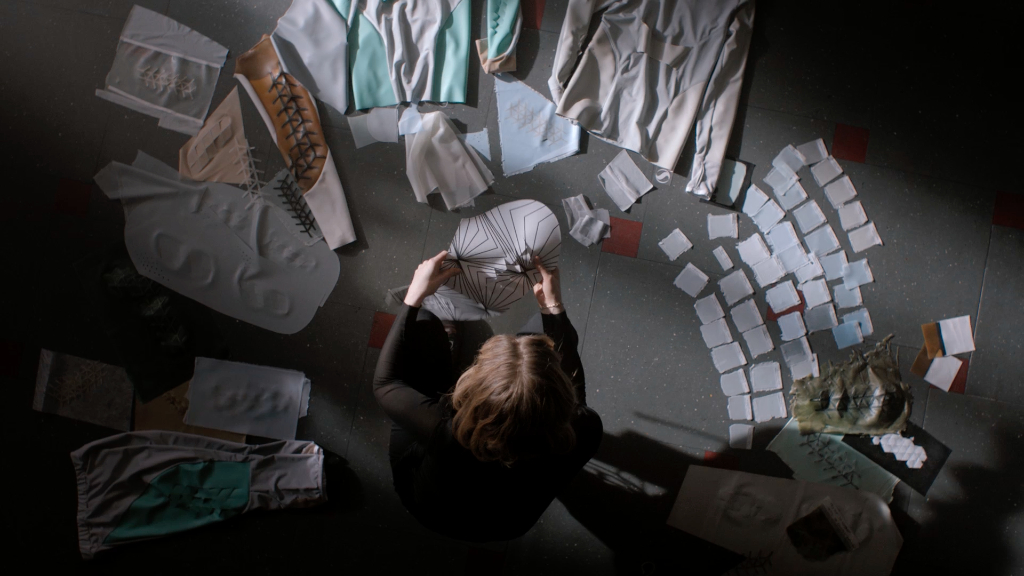
For Dutch fashion designer Pauline Van Dongen, technology is a means to create dynamic expression within fashion. [Technology] offers ways to enhance our senses and experience our environment unexpectedly. One of the unexpected ways is to connect the human body with the environment through wearables technologies applied to fashion garments.
Van Dongen has been working in the development of wearables since she established her studio in 2010. Since then, she has created shirts, jumpsuits, jackets, dresses and shoes that connect the wearer with nature. The duality between night and day is ubiquitous in Van Dongen’s work. One of her aims, increasing night visibility in low-light environments, has made them develop beautiful textiles in the last few years.
The collaboration with Philips Research has enabled them to research new materials and develop Phototrope (2015) and Mesopic (2016). Both projects react to light conditions to increase human visibility in dark surroundings and allow interaction between the body and the environment. While Phototrope is a shirt that incorporates LED ribbons hidden behind TPU foils that refract the light of the LEDs, Mesopic is a silver, half-transparent jacket with LED ribbons integrated into the fabric emits a glow reflection augmenting the night running visibility.
On the other hand, projects like Solar Windbreaker (2016), Solar Parka and Solar Shirt (2015) and Wearable Solar Dress (2014) take advantage of the solar light, the most significant source of energy on Earth, which is non-contaminant, sustainable, and inexhaustible. Van Dongen looks into the possibilities of integrating solar cells and flexible electronics into textiles. A powered jacket, shirt, parka, and dress that captures enough solar energy to allow the wearer to charge a portable device such as a smartphone, USB or camera.
Nature is an unlimited source of ideas. Van Dongen looks into nature, takes inspiration from biomimicry and blends science, fashion and technology to create cutting-edge wearables that blur the boundaries between body and environment. In 2016, studio Pauline Van Dongen went a step further and, in collaboration with SKYNⓇ, they developed SKYNFEEL™APPAREL, a conceptual jumpsuit with an aerodynamic design made out of SKYNFEEL™, an extremely lightweight material.
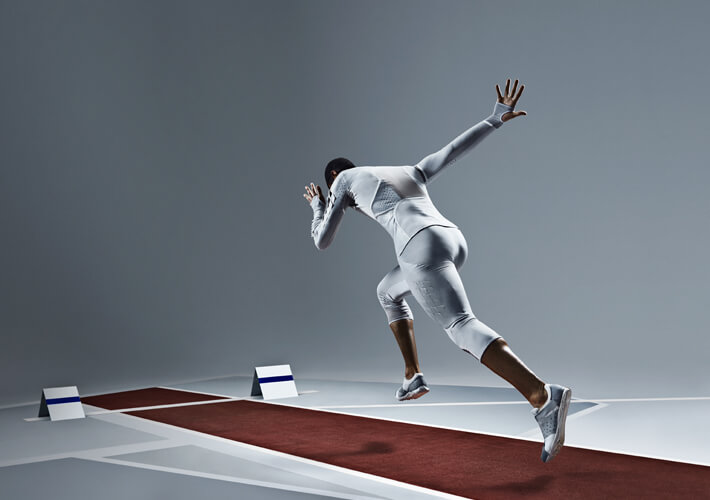
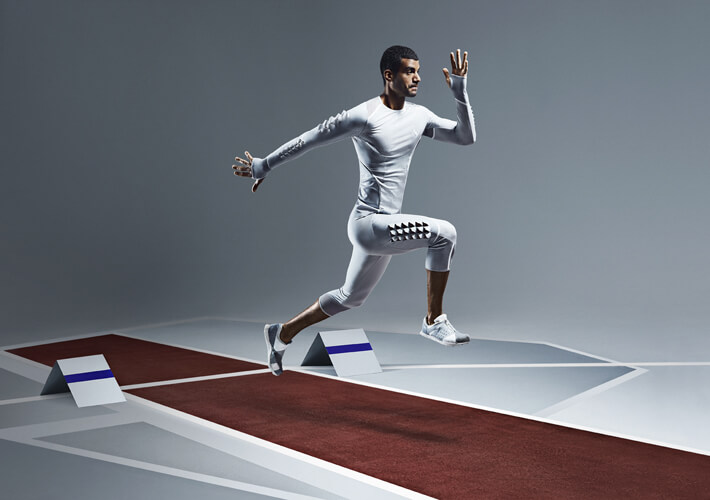
What drew you to working at the intersection of fashion design and technology? Could you tell us a little bit about the intellectual process?
My research into materials and the relationship between our bodies, clothes, and surroundings makes me look at fashion differently. Within the contemporary world of fast fashion, I like to challenge ideas about the meaning and value of fashion. My experimental approach towards materials, tools and processes resulted in a continuous renewal of the notion of craft and explored the role of body fashion.
Textiles surround our body all the time, and our clothes’ impact on our embodied experience and their communicative qualities make it very interesting to explore concepts of interaction, expression and performance using dynamic and responsive materials. I view technology as a means to create emotional expression within fashion. It offers ways to enhance our senses and experience our environment unexpectedly.
ASVOFF9 will launch the world’s first Wearable Technology in Fashion Film Competition. The competition will be a game changer within the world of humanistic intelligence-inspired / art-based wearable technology by communicating the real potential of wearable technology through film. What impact do you think the festival will have on the future of wearable technologies?
As a designer and researcher, one of my concerns is that wearable technology is often positioned and discussed outside of fashion. Of course, many prototypes or actual products don’t necessarily resonate with fashion designers. Still, these general developments – such as integrating new materials and new interactive behaviour in textiles and garments – are very relevant for fashion.
We can no longer ignore that technology is getting closer to the body. However, in advance our ideas and to see where the real value and interest can be found in fashion (not only in using technology as a representational feature or spectacular element but also the meaning that can be found in the experience of wearing it in an everyday context) we need to see what we can learn from other domains such as interaction design and human-computer interaction.
I very much believe in communicating wearables through the use of video. Most wearables present some interactive behaviour. They actively mediate between the body and the environment. Over the past years, I’ve experimented with various ways of showcasing my work. Through catwalk shows, intimate salon-type presentations, interactive installations, exhibitions and demonstrations. For almost every project, we felt like making a video.
Through video, we can, on the one hand, show how wearables will tie into our lives while also embodying the sensory experience of wearing. This is where I see great potential, and I hope the competition will help express this towards a large fashion audience. The more we develop a shared language (verbal and visual) and an understanding between the various disciplines that need to collaborate, the more momentum we will gain to bring these ideas to the next level.
Fashion is a means to have subjective, perceptual experiences. Garments that are smart and capable of learning can adapt to the wearer and potentially develop into an ultra-personalized ecosystem. Current wearable technology products often create a feeling of control as the wearer collects data from their body or personal environment.
Within my design studio, we are currently revisiting the issue of control because we believe too much power diminishes our human tendency to be spontaneous. Instead, we focus on connecting embodied design methods with aspects of semiotics, identity and the social context of fashion.
In real life, we seek meaningful experiences, especially since time and undivided attention have become a luxury. I, therefore, believe that technical inventions that will help us foster and make full use (or even expand) of our senses will gain more social acceptance.
Wearable technologies can communicate with their owners, so the boundaries between physical and digital are blurred. How people respond to multiple stimuli in a digital environment beyond the touch of a screen or button is one of the questions to answer in this 21st century in which people live in a hyper-connected society. What technical invention do you think will have more social acceptance or impact in real life in the future?
Fashion is a means to have subjective, perceptual experiences. Garments that are smart and capable of learning can adapt to the wearer and potentially develop into an ultra-personalised ecosystem. Current wearable technology products often create a feeling of control as the wearer collects data from their body or personal environment.
Within my design studio, we are currently revisiting the issue of control because we believe too much control diminishes our human tendency to be spontaneous. Instead, we focus on connecting embodied design methods with aspects of semiotics, identity and the social context of fashion. In real life, we seek meaningful experiences, especially since time and undivided attention have become a luxury. I, therefore, believe that technical inventions that will help us foster and make full use (or even expand) of our senses will gain more social acceptance.
What are the biggest challenges you face in your projects?
There are still some pretty technical and practical challenges we need to overcome. Fashion thrives on change; therefore, the technologies we use need to be modular to be easily adapted or altered. The challenge is to work on a yarn and textile level to allow these technologies to become part of our clothes unobtrusively.
At the same time, I also think that Wearable Technology has to deal better with the stigma it has attached to it – especially seen through the eyes of the fashion industry – to create social acceptance. We must show that wearables are not only about functionality when measuring biometrics, for instance, nor are they solely meant for graphic display. Interlacing technology’s aesthetic and functional aspects might open up a new scope for fashion design.
You couldn’t live without…
I couldn’t live without movement, things changing, shifting, growing or being in a continuous flow. Both personally as well as in my environment.

